by Bhanu Chopra
In the late 1990s and early 2000s I was deeply immersed in learning about pilot’s watches from online forums and military watch books. During my knowledge quest, I became fascinated with one specific pilot’s chronograph: the Orfina Porsche Design “3H military.” The Austrian offshoot of the Porsche car company collaborated with companies on watch production, with Orfina manufacturing the 3H military chronograph in 1979, pulling the military aviation watch style somewhat into the mainstream.
Others followed suit, notably Tutima in 1983, which became one of the leading propagators of the pilot watch style as Porsche Design veered into a different direction.
Tutima Reference 798, also known as the M2 NATO chronograph, was built on the concept begun with the Orfina chronograph but with far better design and operability. The most noticeable improvement was the large integrated pushers, which made it easier for the pilots to operate the chronograph pushers even with gloves on. Tutima also rounded the edges of the case to minimize possible damage to cockpit equipment.
Reference 798 was issued to the German Air Force in 1983. Its design and technical specifications were based on strict guidelines by the German Armed Forces’ central procurement department. Tutima secured a NATO Air Force contract in 1984, and henceforth the watch was known as the NATO chronograph. Even the U.S. Air Force had a short-lived contract for the NATO chronograph.
The NATO chronograph was powered by Lémania Caliber 5100 – just like the Porsche Design Orfina – with central chronograph seconds and minutes hands as well as day and date displays. Caliber 5100 could withstand 7G acceleration and massive shocks, and yet it could go without servicing for long periods. The 43 mm case was pressure-resistant for use to 15,000 meters above sea level.
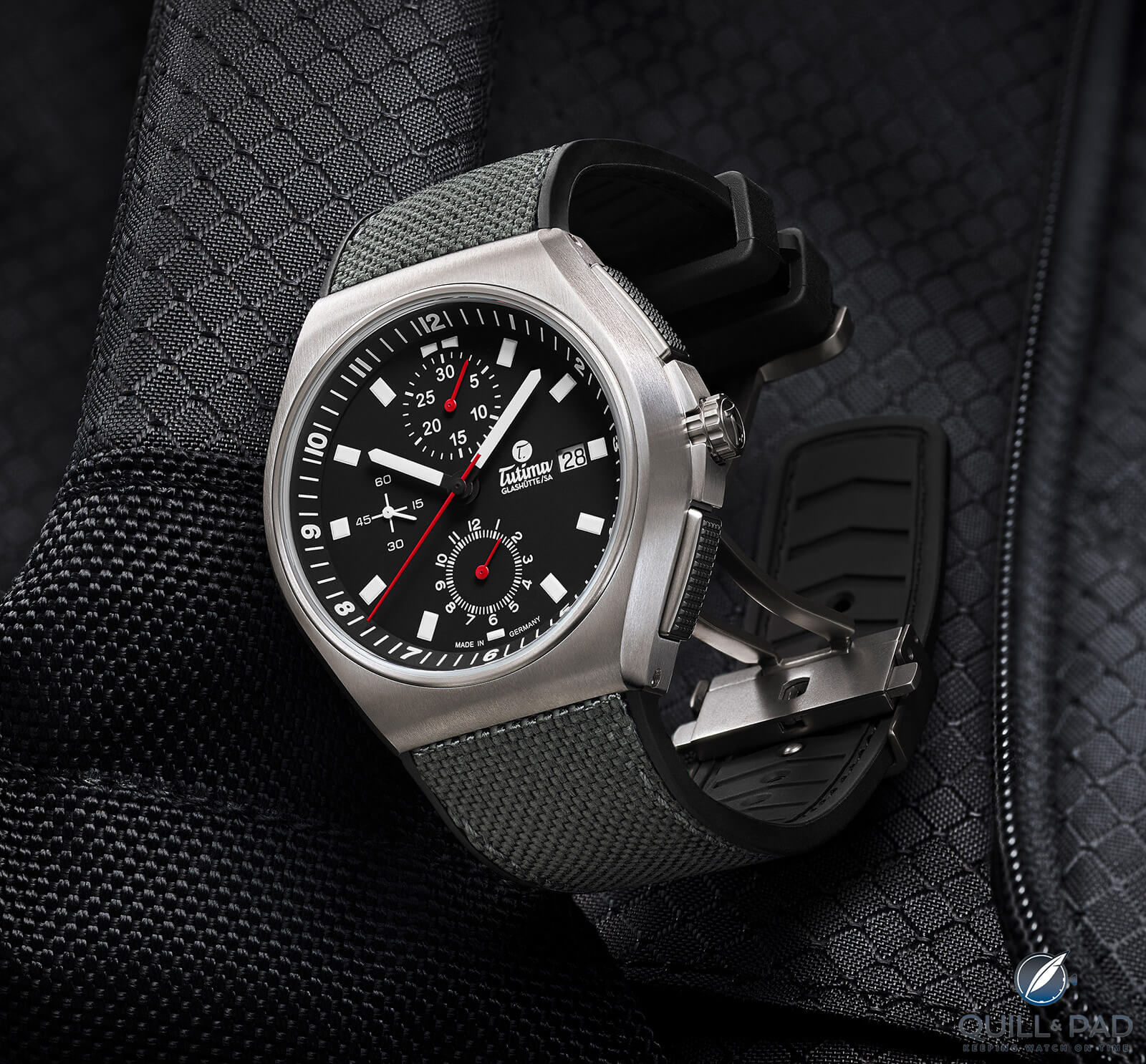
Tutima M2 Coastline chronograph with black dial
Tutima M2 Coastline
The modern M2 series are no longer powered by Lémania Caliber 5100 (the movement manufacturer was acquired by Swatch Group), but then again civilian watches do not have the stringent requirement of withstanding 7G acceleration!
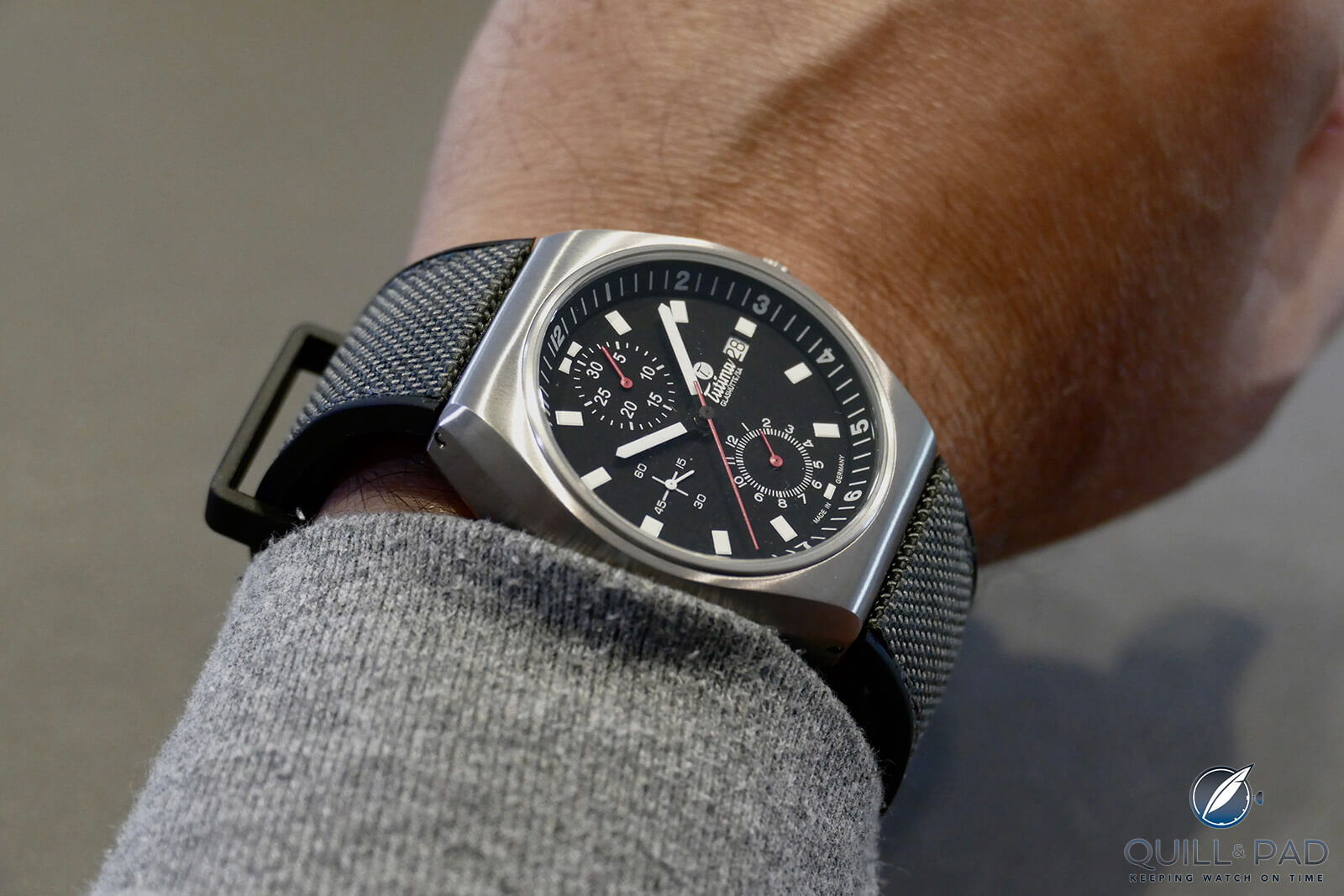
Tutima M2 Coastline chronograph on the wrist (photo courtesy Mike Stuffler)
However, Tutima’s modern M2 series are protected by a titanium case pressure resistant to 30 atmospheres, including an inner layer of nickel–iron soft ferromagnetic alloy with very high permeability, which shields against static and low-frequency magnetic fields.
Tutima enhanced the integrated chronograph pushers with grooved neoprene inlays, which makes operating the pushers much easier and prevents accidental engagement of the chronograph.
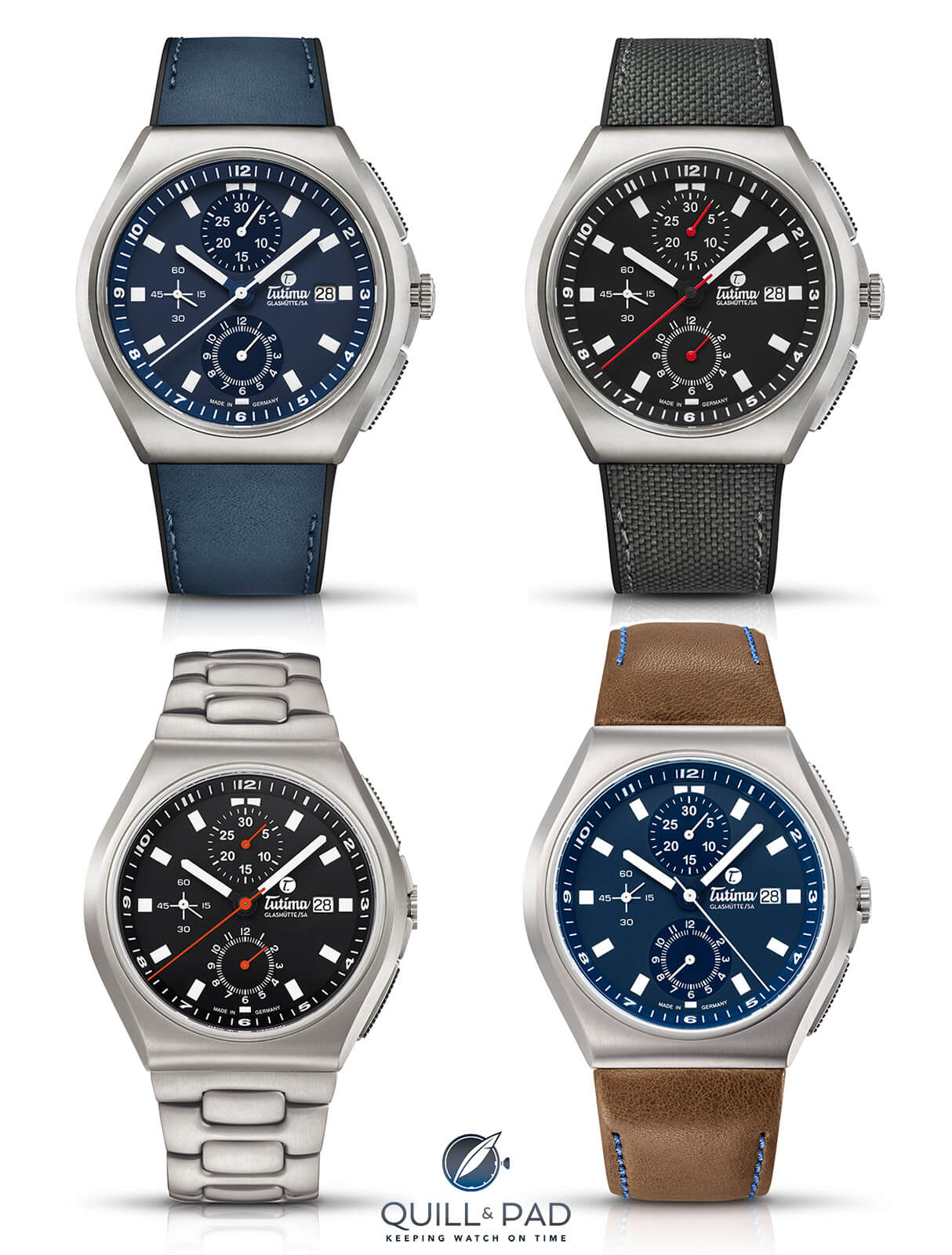
Tutima M2 Coastline chronograph variations
My favorite from the M2 series is the Coastline Chronograph Ref. 6430-05 with a black dial and textile strap. Like the original NATO chronograph, the case diameter of the M2 Coastline is 43 mm. I found the larger 46 mm M2 watches to be bit unpractical, even though their titanium case makes them light enough. Unfortunately, the Coastline chronograph does not have the soft-iron inner case for magnetic protection, but the updated movement is more modern so is less likely to need it.
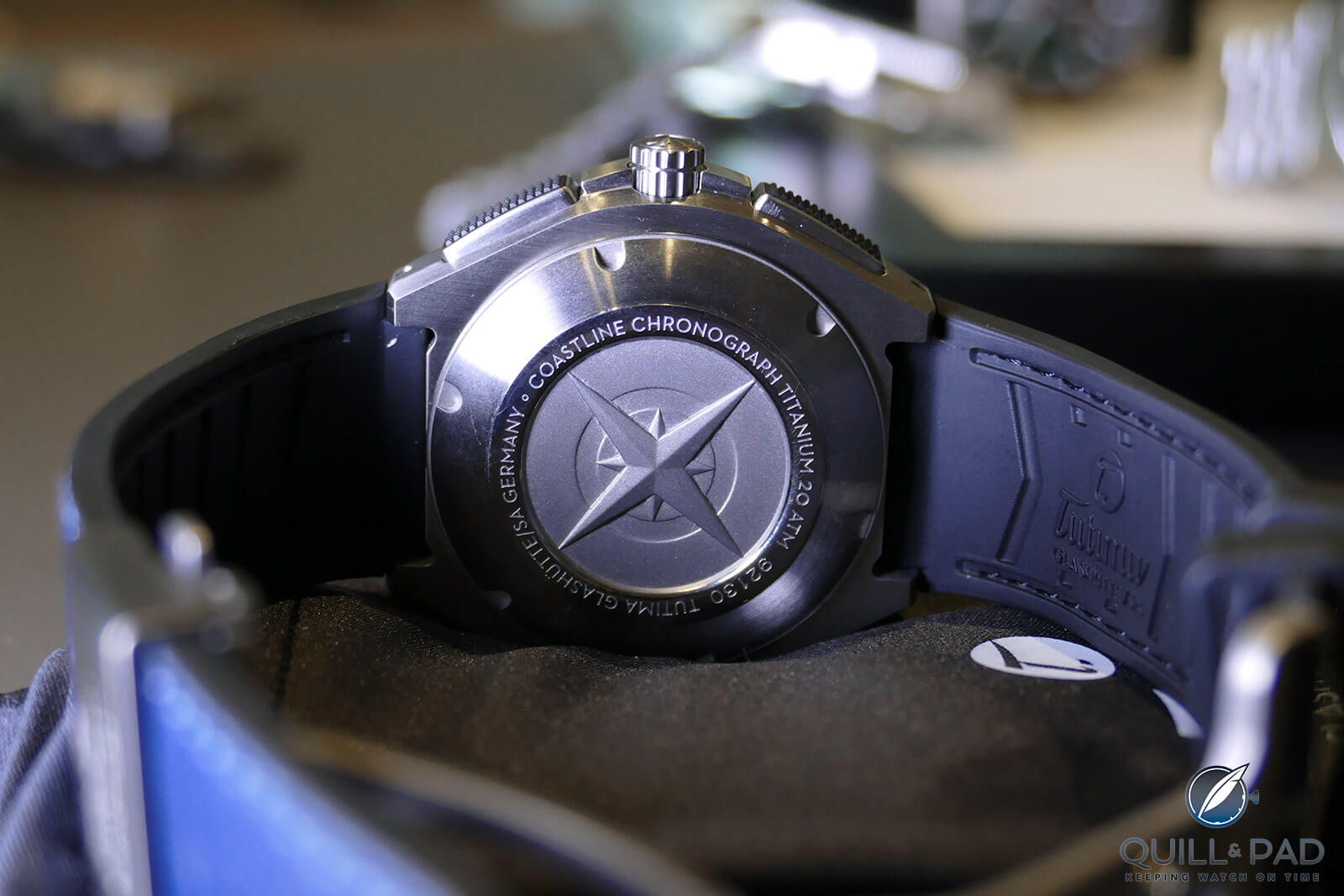
Back of the Tutima M2 Coastline chronograph (photo courtesy Mike Stuffler)
The M2 Coastline is powered by a modified ETA Valjoux 7750 with a central chronograph second hand, a 30-minute counter at 12 o’clock, and a 12-hour counter at 6 o’clock. The running seconds has a telescopic sight-type crosshair motif at 9 o’clock. The date window is at 3 o’clock, but I would wish that instead of the logo it had the day indication like the original.
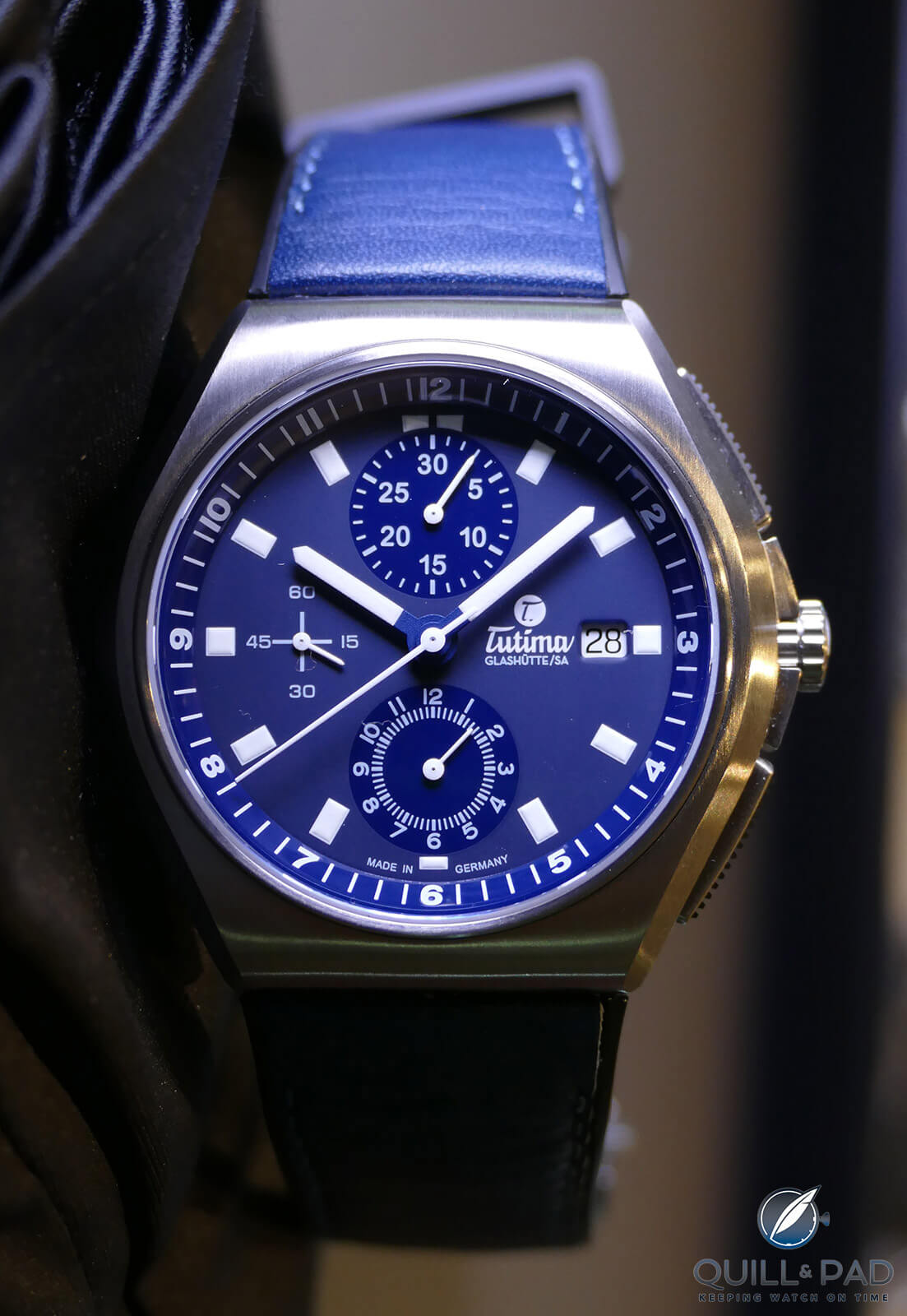
Tutima M2 Coastline chronograph with blue dial (photo courtesy Mike Stuffler)
There are two dial colors offered: black and blue. I find the black-dial version to be a good everyday sports watch, whereas the blue dial turns it into a more casual watch. I would wear the blue dial during the summer or take it on a beach holiday. The M2 Coastline is water resistant to 200 meters.
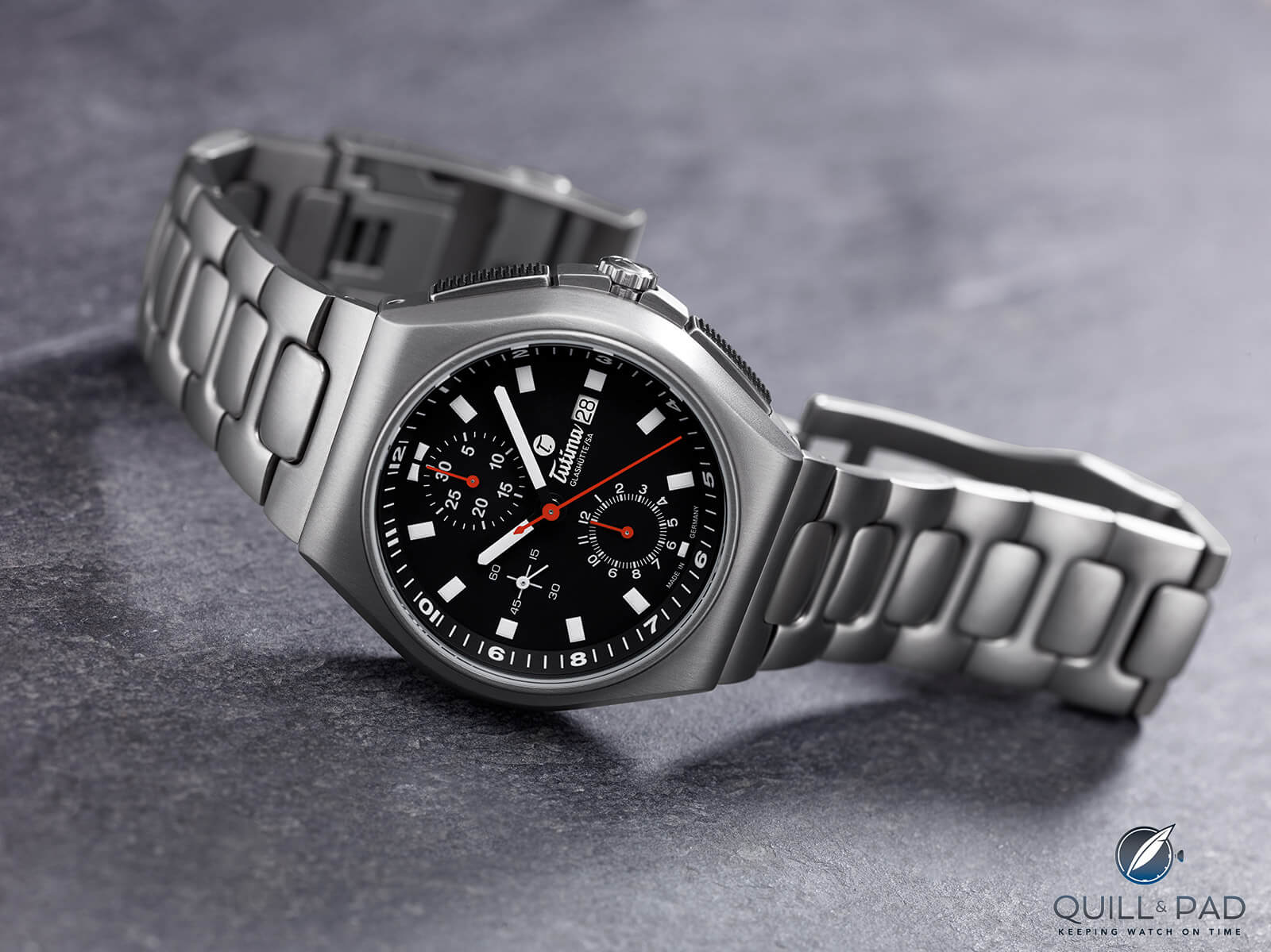
Tutima M2 Coastline chronograph on bracelet
Both models are available on a titanium link bracelet with folding clasp. Alternatively, the black dial variation can be ordered with a textile/rubber strap, while the blue-dial variation comes with a leather/rubber strap.
For more information, please visit www.tutima.com/watch/m2-coastline-chronograph-6430-05.
Quick Facts Tutima M2 Coastline Chronograph
Case: 43 x 15.8 mm, brushed titanium
Movement: automatic Caliber 310 (based on ETA Valjoux 7750), 4 Hz/28,800 vph frequency, 48-hour power reserve
Functions: hours, minutes, small seconds; date, chronograph
Water resistance: 200 meters
Price: €2,900/$3,300 on strap; €3,100/$3,700 on titanium bracelet
You may also enjoy:
You Are There: Visiting Tutima Glashütte In Germany
90 Years Of Tutima: An Abbreviated, Complete History
Tutima Saxon One Lady: Edgy Elegance With A Cushion-Shaped Twist
Leave a Reply
Want to join the discussion?Feel free to contribute!





















































To start directly with the first reason not to buy this Tutima watch and to give the reason for that in the same first sentence is quite interesting to see. Not to mention the last reason not to purchase oney with the asking price but what can only be addressed to Tutima itself.